Ramses III, the final great sovereign of the New Kingdom’s 20th Dynasty, reigned from 1186 to 1155 BC. Throughout his rule, he vigorously combated the pervasive corruption plaguing the nation and repelled invading forces, famously known as the Sea Peoples.
Situated in the village of Medinet Habu, the Mortuary Temple of Ramesses III stands as one of Thebes’ most significant religious edifices.
Intentionally modeled after the Ramesseum, the temple comprises two pylons, two courtyards, and three hypostyle rooms. Additionally, it features a pier and a canal linking it to the Nile, facilitating the deity’s ceremonial boat processions.
Inside the temple: The First Pylon
The first pylon, a monumental entrance spanning 63 meters in width and rising 22 meters in height, adorns its exterior with depictions of the pharaoh punishing prisoners before the gods Ra-Horakhti (on the right) and Amun (on the left), who extends the symbolic khopesh sword to him.
An inscription praises the pharaoh’s deeds as the gods address him. Territories subdued during the eighth year of his reign are depicted, with their names inscribed on rings featuring human heads. Additionally, hunting scenes grace the west facade.
The First Courtyard:
Measuring 34 by 32 meters, the first courtyard houses a portico with eight columns adorned with bell-shaped capitals on its left side, and seven Osiris pillars on the right.
Decorated scenes illustrate the pharaoh’s victory over Libyan adversaries and celebrations thereof, including a procession of prisoners with severed tongues.
The Royal Palace:
Adjacent to the first courtyard stands the now-decayed royal palace. The southwest facade, representing the entrance to the palace, boasts three doors and an “apparition window.”
The palace served as the venue for the pharaoh to oversee religious ceremonies held in the courtyard from a tribune accessed via a staircase. Military scenes, including massacres, battles, and processions, adorn much of the temple, underscoring the intertwining of temporal power and divine favor.
The Second Pylon:
Situated lower than the first pylon at 16 meters, the second pylon features a black granite door flanked by two colossal statues, now lost to time.
Adorning the exterior are depictions of captives being presented to Amun and Mut. Within, scenes depict festivities honoring Seker and Min, accompanied by a detailed 38-line account of the pharaoh’s achievements.
The Second Courtyard:
Accessible from the second pylon, the second courtyard surpasses its predecessor in size, measuring 38 by 41 meters. Enclosed on all four sides, it boasts two opposing porticos adorned with eight Osiris pillars each, flanking two rows of five columns on both sides.
Notably, the lower row is accessed by a small ramp once flanked by colossal statues, now vanished. Behind it stands a row of eight papyriform columns.
Decorative motifs within the porticos and columns depict battles, offerings of prisoners, and religious ceremonies venerating Seker, alongside representations of divine worship and the procession of sacred boats.
First Hypostyle Hall:
Following the second courtyard is the first hypostyle hall, featuring 24 columns, though only a few remain intact. Encircling the hall are small chambers designated for various purposes, including a chapel dedicated to the deified Ramses II, a treasury chamber, an offering room, and chapels consecrated to Ptah, Seker, Osiris, and the deified Ramses III.
Second Hypostyle Hall:
The second hypostyle hall is adorned with depictions of the Fields of Aaru and the Seven Cows from the Book of the Dead. Leading to the sanctuary, the last hypostyle hall houses chapels dedicated to Mut and Khonsu, as well as one housing the sacred boat.
External Decorations:
Externally, the temple is embellished with military scenes featuring the pharaoh, hunting expeditions, and a calendar showcasing religious festivities.
Completing the enclosure are a sacred lake, located near the temple of the 18th Dynasty, and a nilometer consisting of a corridor and a staircase adorned with the cartouches of Nectanebo I.
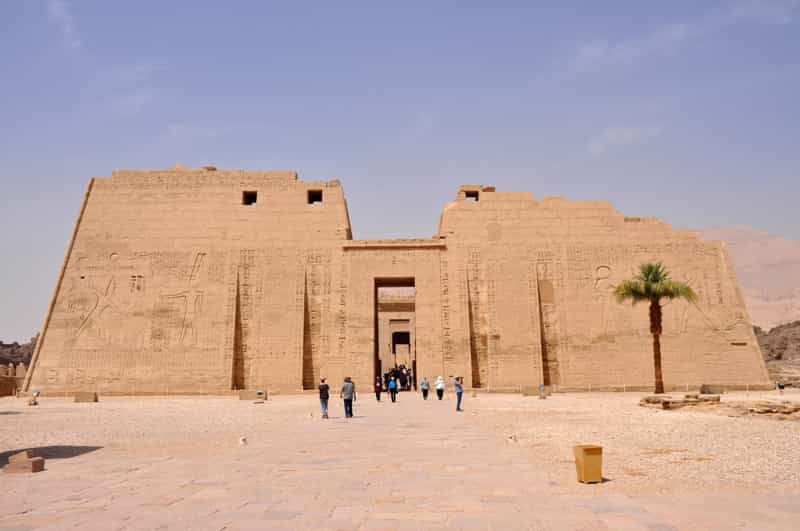
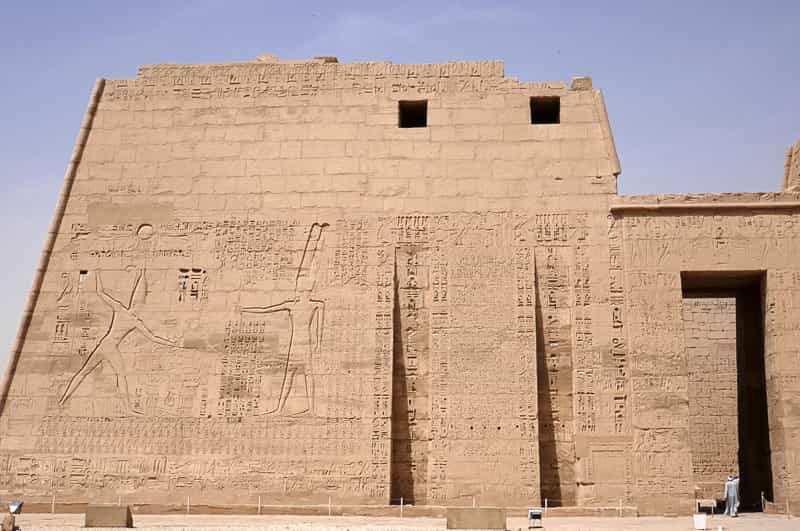

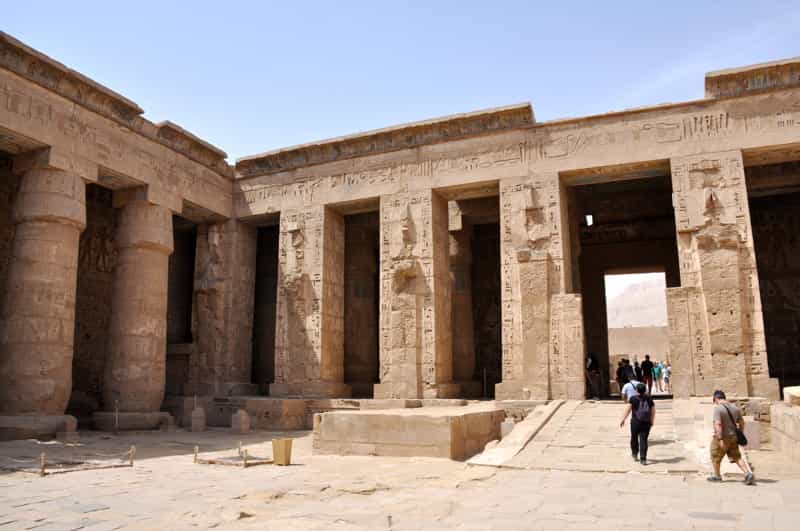
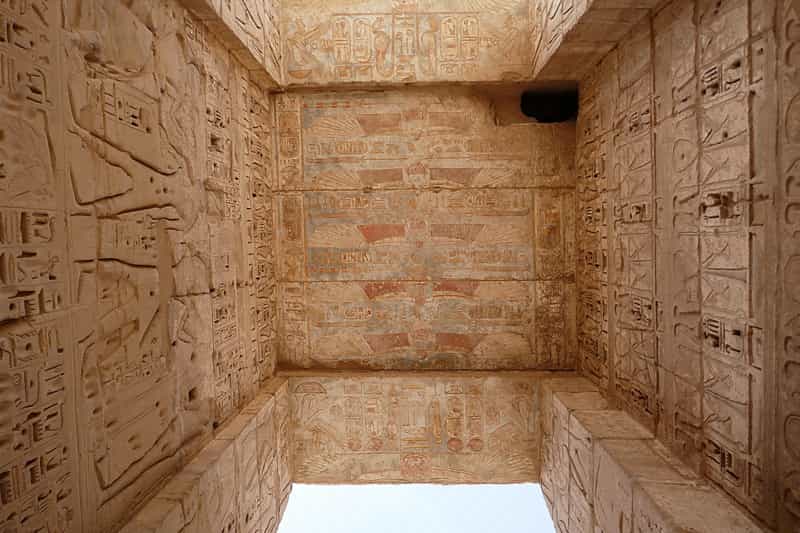

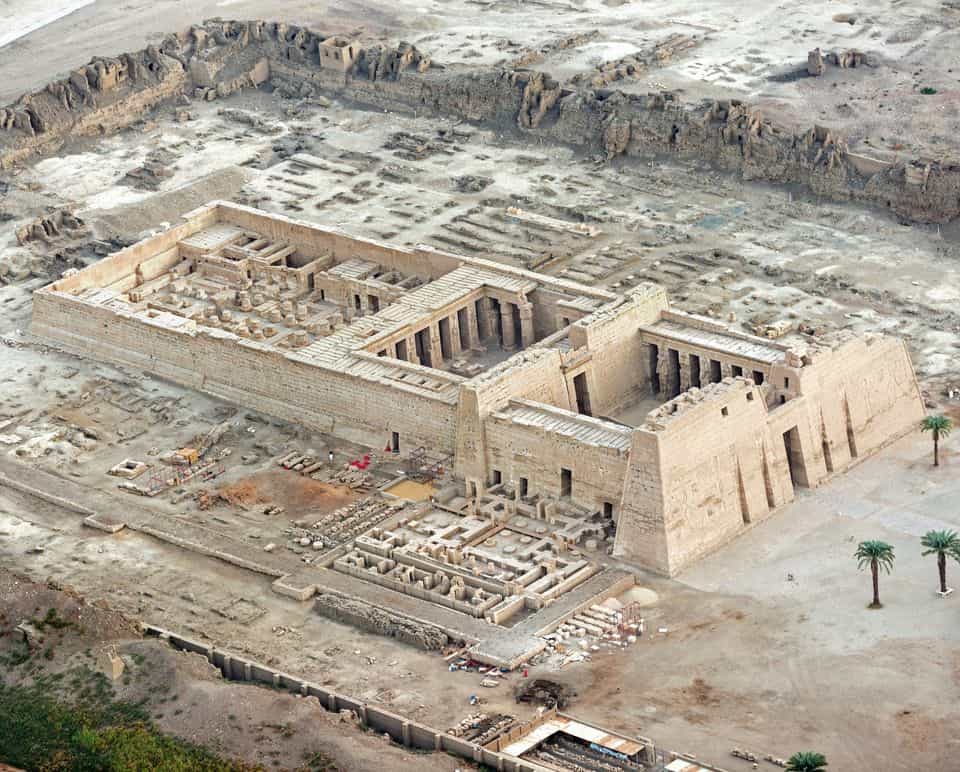
#Mortuary #Temple #Ramesses #III #Medinet #Habu


